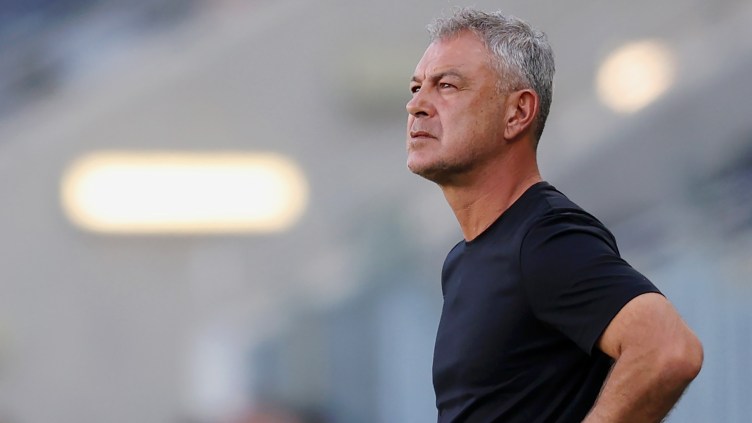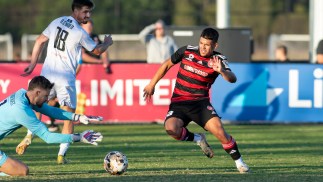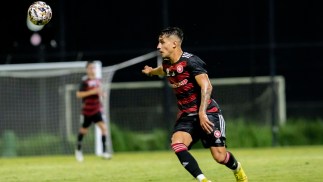A dream, which turned into a nightmare. A bold experiment to unite the tribes of western Sydney’s fractured football community. Sound familiar?
Ghosts? If they’re there, in the ether at Parramatta Stadium, no one at Western Sydney Wanderers has seen them, or felt them. Which is just as well.
As the Hyundai A-League newcomers countdown the hours until kick-off for their history-making debut match against Central Coast Mariners, it’s probably best that the memory of Parramatta Power remains forgotten – buried deep in the graveyard of deceased former NSL teams.
For all that, the Wanderers would do well to heed the lessons from the failed experiment of the stadium’s only other football tenants. Thankfully, you sense they have.
So who were the Power? A dream, which turned into a nightmare. A bold experiment to unite the tribes of western Sydney’s fractured football community. Sound familiar?
Bankrolled by the pokie-rich Parramatta Leagues Club, they entered the NSL in 1999, with a budget that dwarfed most of their competitors, perhaps only matched by the other big-spenders of the era, Perth Glory.
Full-time professionalism, well-funded development pathways, and a stadium that was the envy of the rest of the league. Build it, and they will come. That was the plan. Unfortunately, they didn’t.
There was little wrong with the team, apart from a shaky debut season.
Here’s a list of former Power players still running around in the A-League: Michael Beauchamp, Clint Bolton, Mark Bridge, Jacob Burns, Simon Colosimo, Travis Dodd, Andrew Durante, Mile Sterjovski, Matt Thompson, Danny Vukovic, Pedj Bojic, Adam Kwasnik. A pretty impressive bunch.
Brett Holman and Joel Griffiths passed through the dressing room. So did Ante Milicic, the current Wanderers assistant coach.
Money was, in relative terms, no object in assembling the squad. But it wasn’t only about the cash. Holman, famously, was the subject of a bidding war between Marconi Stallions, Sydney Olympic, Northern Spirit and Parramatta Power while still at Westfield’s High.
Parramatta got their man not because they offered him the best financial deal, but because he wanted to be one of the 10 founding apprentices in a system he felt would give his professional career the best possible start.
For about an quarter of what the other clubs were willing to pay, he signed on the dotted line for inaugural coach Dave Mitchell, and has never looked back.
In many ways, as a football operation, Parramatta were years ahead of their time.
But despite paying big to buy big, the team never got traction where it counted. At the turnstiles. Just once, when hosting Sydney Olympic in their debut season, did they crack a five-figure crowd.
Over the five seasons of their existence, crowd averages were 5,029 (1999/00), 3,358 (00/01), 3,617 (01/02), 3,056 (02/03) and – finally – a demoralising 2,324 (03/04).
That last season, they finished runners-up in the minor premiership, and earned hosting rights for the grand final. The crowd on title day? A woeful 9,630. That’s why the Eels Leagues Club, having burned through an estimated $15 million, decided not to apply for a A-League license.
“Our (Power) problem was we pushed our way into the league, and that upset a lot of people,” says Mitchell.
“From the start, there were a lot of people out in the west who didn’t want us to succeed. Did they get a boycott going of our games? Maybe. Was it the tall poppy syndrome because we had a lot of money behind us? Probably.
“What I do know is we did a lot of things right, but it was all about the timing. We got into the NSL basically when it was dying. If we had applied at the start of the A-League, it would have been a completely different story. I’m convinced about that.”
Whatever the case, it’s taken eight years, and at least three false starts, to try and get it right.
And thus we come to the Wanderers, who clearly have great hope, and belief, they will not head down the same cul-de-sac. As much was western Sydney is a heartland for the game in terms on football culture and participation, it remains a tough nut to crack.
There’s no doubt huge numbers of people west of Woodville Road love football. But support it? That’s always been the disconnect.
Beauchamp, the founding skipper of the Western Sydney, is uniquely positioned to compare the Power and the Wanderers. He played in Parramatta’s final match, and will lead out Western Sydney in their first match.
Eight years, and a few too many headers, may be challenging his memory, but there is one overriding impression he takes from his two seasons with the Power. No one was there.
“You’d walk down the tunnel, and you’d look around, and all you would see were empty seats,” he recalls.
“I enjoyed my time there; they were a good bunch of boys, the facilities, the support staff, the stadium, were great. But they couldn’t get the bums on seats.
“I’m not sure where it all went wrong. What I do know is there’s no reason why a club can’t succeed in western Sydney, if you get it right. I’ve got no doubt the Wanderers are doing everything right, and we can be the club for the long-term.”
Where did it go wrong for the region’s first attempt to establish a flagship club? Top-down, rather than bottom-up.
Beauchamp doesn’t remember too many school visits with the Power. A club managed and run by non-football people made the fatal error of not appreciating, or identifying, with the game’s greatest strength: the grassroots. Instead, the focus was all at the top end. Wrong.
The Wanderers have got that part right. The colours, the logo, the name, all came from the community. Recruitment has focused, at least in part, on promoting local players.
Western Sydney is not meant to just be a name. It’s meant to be a rallying cry. We’ll see.
“We’re putting ourselves out there all the time,” says Beauchamp.
“No club would have done more community work than we have. We’re really trying to get the locals a lot more involved. Hopefully, it works.”
Payday won’t come in game one again the Mariners, although a crowd tipped to be between 10,000-12,000 would represent a promising start.
It will come over time. If the club does the right thing by the community, then, eventually, the community is supposed to do the right thing by the club. That’s the expectation, and for the sake of the Hyundai A-League, we’ve all got to hope it’s met.
In the meantime, take a close look at Beauchamp’s face as he leads out his Wanderers teammates for the first time. There’ll be nerves, and excitement. But most of all – for a boy born and raised in the Liverpool area – there’ll be pride.
The views expressed in this article are purely those of the author and do not reflect those of FFA or the Hyundai A-League.
Got tickets to see your team in action this weekend? Click here for tickets to all the matches.
The official Hyundai A-League 2012/13 fantasy football game and tipping competitions are also open – so sign up now.



